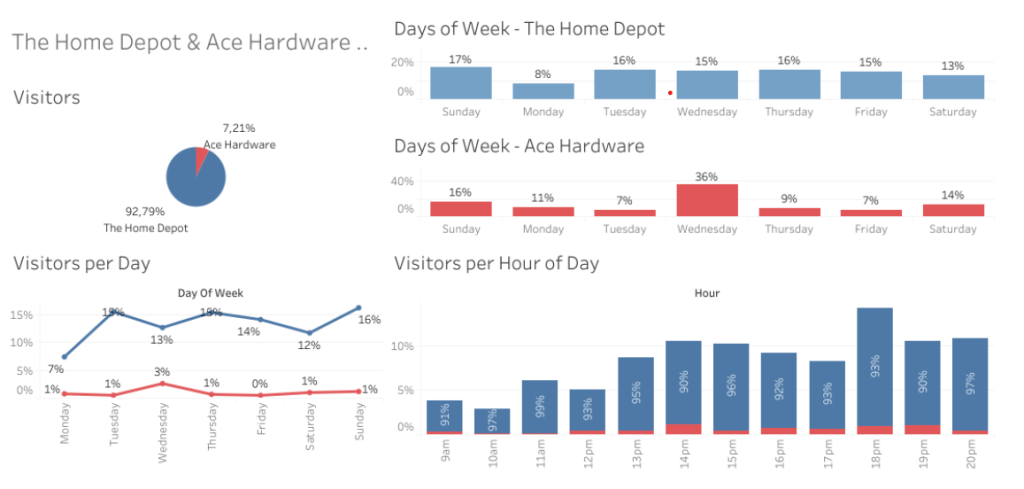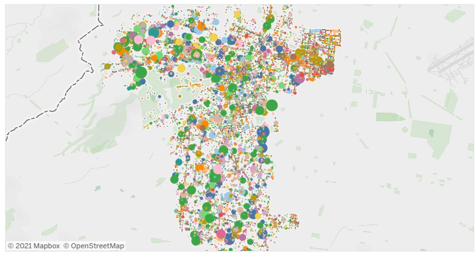Are Predictive Models Useful in Business?
More companies are turning to predictive analytics to optimize their processes, achieve better business results and increase their market share. Organizations use internal predictive analytics to forecast trends, understand and predict customer behavior, improve performance and drive strategic decision making. You may be interested in: “What are predictive models and what are they used for?“ Some […]
What are Predictive Models and What are they Used for?

Predictive models are statistical tools that use machine learning supported by Big Data mining to predict and forecast likely future outcomes with the help of historical and existing data by inputting multiple parameters. They can be used to predict virtually anything containing existing data, in every sector imaginable, from ratings of any program, a customer’s […]
How to Measure Pedestrian Flow with Mobility Data?
Through solutions based on advanced mobility data analytics and predictive models, it is possible to identify different types of patterns, needs, strategies or even future consumer trends. There are hundreds of solutions and analyses that can be performed thanks to mobility data, such as forecasting models, tracking and predictive market models, business intelligence, real estate […]
Big Data Applications in the Port and Maritime Industry
In today’s digital age, competition in the port, logistics and maritime sector has led companies to constantly invest in solutions that help them increase productivity and reduce overall costs, consequently, the demand for advanced solutions, such as maritime data analytics, is growing at an impressive rate among commercial shippers and other end users. The port […]
How does Big Data Improve Customer Relationship Management?
CRM (customer relationship management) combined with Big Data is the practice of integrating big data into internal business processes with the aim of improving customer service and predicting customer behavior, finding patterns and trends to take advantage of sales opportunities, adjusting product and service offerings to increase profits among others. This combination improves customeranalysis and leads to […]
Big Data Models Most Used in Business
Any data model in Big Data must be designed and developed to meet the needs of the business, and for this, it is necessary to know the objectives and goals of the organization, so that it effectively has the necessary functionalities to facilitate the decision-making process in the company. What is a data model applied to […]
Big Data: How Many Visits Receives My Store Vs. the Competition?

Analyzing the number of consumers who visit the establishments of any retail company, establishing the days and hours of greatest affluence and comparing it with competing sales points, is possible with Big Data techniques that allow the collection and analysis of large volumes of mobility data. The millions of anonymized data generated every second by cell phones […]
Big Data to Infer Relationships between Companies
By analyzing the large volumes of anonymous data generated by mobile devices, it is possible to establish whether a distribution center has a commercial relationship with other logistics complexes, and even with establishments that serve the end consumer. Using the most advanced Big Data tools, it is possible to understand the behavior of the supply […]
Geospatial Data to Optimize Supply Chain

Through geospatial data analysis techniques, PREDIK Data-Driven carried out an analysis of five Walmart distribution centers in Florida, United States, with the aim of identifying patterns in the supply chains of these five centers and their relationships with commercial establishments and other logistics complexes in the State. Through this analysis, whose objective is to show how […]
Data Science to Analyze Relationships between Companies
Big Data has currently become one of the newest allies to infer relationships between companies, competitors and suppliers, since the analysis of large volumes of data can reveal missing or relational aspects between different sectors within organizations, where they can complement each other. The set of networks in which companies participate are considered as a resource […]
